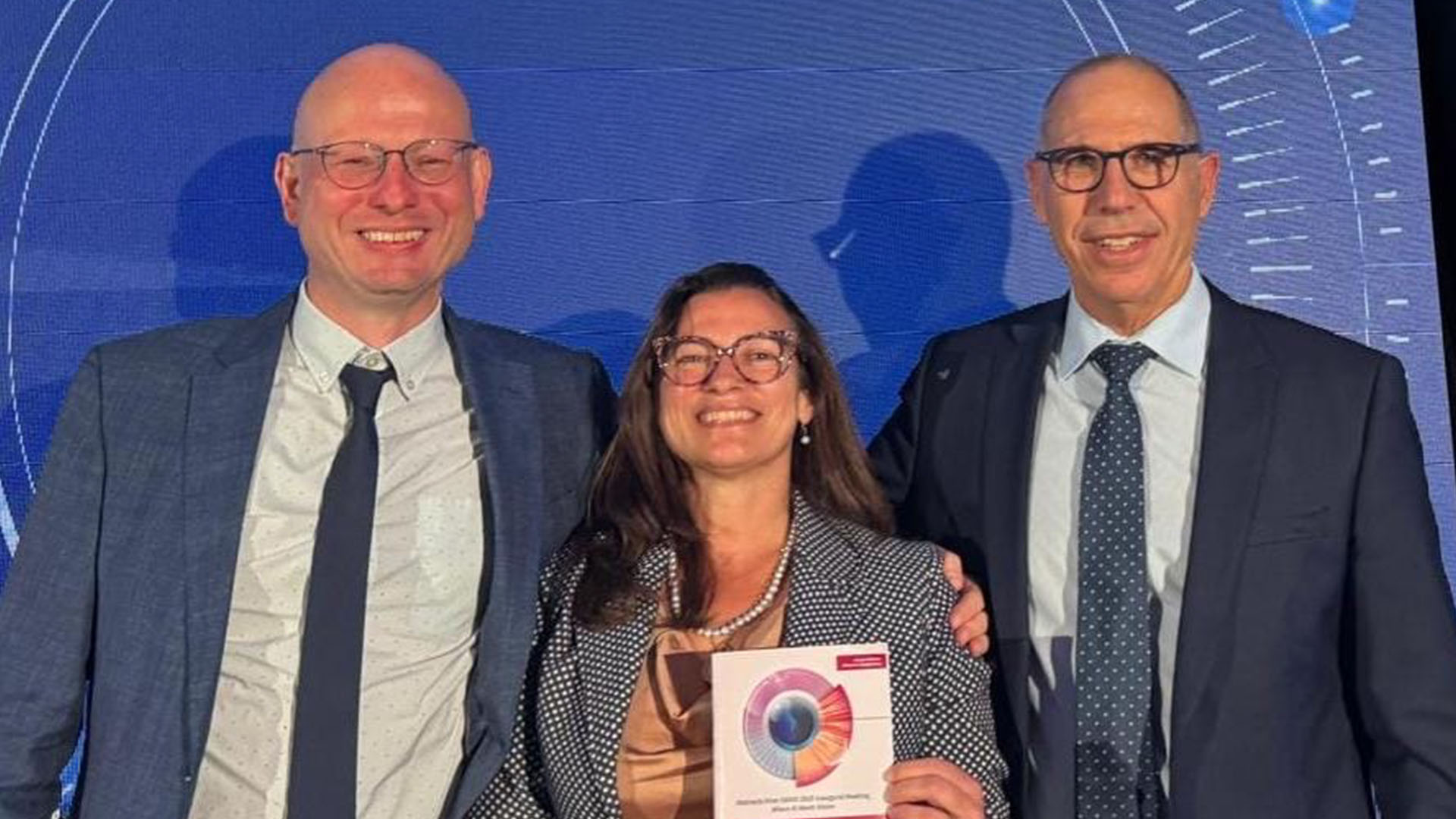
When engineering, medicine and artificial intelligence see as one, vision takes place
Oct. 17 marked the inaugural meeting of the Society for Artificial Intelligence in Vision and Ophthalmology (SAIVO), a new global organization bringing together leaders in artificial intelligence, vision science and clinical care. During the meeting, the journal entitled Artificial Intelligence in Vision and Ophthalmology (AIVO) — cofounded and edited by Maine College of Engineering and Computing Dean Giovanna Guidoboni — was officially announced as the society’s journal of record, marking an important step in advancing the safe, ethical and effective use of AI in eye and vision research.
AIVO is the first international journal exclusively dedicated to the convergence of AI and vision science. It provides a first-of-its-kind platform for interdisciplinary research spanning ophthalmology, optometry, computer science, physics, clinical science, mathematics, engineering and physiology to improve understanding and treatment of the visual system.
“Over the last decade, AI has moved from a computational curiosity to a clinical necessity, and this journal stands on the front lines leading that transition,” Guidoboni said.
The journal dates back to 2014, when the Journal for Modeling in Ophthalmology (JMO) was founded by Guidoboni; Alon Harris, professor of ophthalmology, professor of artificial intelligence and human health, Co-Director of the Barry Family Center for Ophthalmic Artificial Intelligence & Human Health at Mount Sinai Hospital; and Simon Bakker, managing director of Kugler Publications, to promote mathematical and computational modeling in ophthalmology. Based on the growing relevance and rapidly expanding role of AI in vision science, JMO evolved into Modeling and Artificial Intelligence in Ophthalmology in 2021, then transitioned to its current title, AIVO.
At the time, most mathematical and computational approaches to vision did not neatly fit into existing research or publishing categories. Recognizing that along with the need for a new vision and new mathematics to understand biological and clinical systems, a new venue for these ideas to converge needed to be created. The journal was founded to be a place where research at the crossroads of disciplines could be shared.
“The transformation from JMO to AIVO represents more than a name change. It mirrors the evolution and interdisciplinary nature of our field,” said Guidoboni, who also serves as editor-in-chief.
The formation of SAIVO adds to the momentum. Established independently by researchers and clinicians worldwide, SAIVO encourages collaboration and transparency in AI applications for ocular care. Its partnership with AIVO creates a natural alignment between technology, the people advancing science, research and the platform sharing it, thereby creating a unique environment to move innovation forward.
“This journal and SAIVO were born from the same need to bring together the people researching and the platform needed to share research,” said Harris. “With SAIVO and AIVO now formally aligned, the field has both a home for collaboration and a voice for discovery.”
Published by Kugler Publications under the leadership of Managing Director Simon Bakker, AIVO features an international and interdisciplinary editorial board of leaders in ophthalmology, AI, and computational modeling.
“Our shared goal has always been to elevate the field through quality, but always focusing on accessibility,” said Bakker. “AIVO’s partnership with SAIVO creates a powerful bridge between cutting-edge research and the global community working to apply it. Especially in an inherently interdisciplinary field that didn’t have a natural publishing fit.”
For Guidoboni and Harris, the journal’s interdisciplinary mission reflects their own research philosophy and work using engineering, physics, mathematics and AI to model complex biological systems from the eye to the cardiovascular and urinary systems. Each holds a faculty appointment at the other’s university, reflecting their ongoing interdisciplinary collaboration Their research group was the first to quantify retinal venous susceptibility to collapse due to blood and intraocular pressure, later validated in a population study of nearly 20,000 eyes in Singapore, and to develop digital twins of both the eye and the lower urinary tract.
“The human body is one of the greatest engineers of all,” said Guidoboni. “My passion for research and for inspiring the next generation of scientists comes from seeing how technology, physics, and biology converge to help people. This journal is the ultimate embodiment of this collaborative, cross-disciplinary vision.”
Through her leadership at UMaine, Guidoboni continues to expand access to research opportunities for Maine students at all levels, emphasizing the human side of AI and the power of interdisciplinary collaboration including bringing high school students to international conferences — meeting with Harris and other industry leaders. The partnership between AIVO and SAIVO represents a defining moment for the global vision science community—one that unites people, purpose, and innovation to shape the future of artificial intelligence in vision and ophthalmology.
Contact: Taylor Ward, taylor.ward@maine.edu
